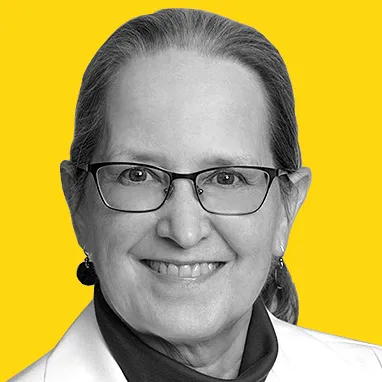After you’ve undergone treatment such as chemotherapy or surgery to remove breast cancer, there’s always a risk of the same type of cancer cells coming back. But for some people, aftereffects of cancer treatment may also put you at risk of developing a new, unrelated cancer. This is called a second cancer.
One recent study found that women with breast cancer have an 18% increased likelihood of developing a second cancer compared to the general public. Experts say the risk factors can range from genetics to long-term effects of breast cancer treatment.
What Types of Second Cancer Are You at Risk For?
Breast cancer is the most common type of second cancer you’re at higher risk to develop. Unlike your first breast cancer, these are entirely different cancer cells and may develop in the opposite breast or the same one as your last if you had a lumpectomy.
Depending on what type of breast cancer treatment you got, you may have a higher-than-average risk to develop other second cancers such as:
- Salivary gland cancer
- Esophagus cancer
- Stomach cancer
- Colon cancer
- Uterine cancer
- Ovarian cancer
- Thyroid cancer
- Soft tissue cancer (sarcoma)
- Melanoma of the skin
- Acute myeloid leukemia (AML)
- Lung cancer
Research also shows that race and age are risk factors for second cancers, too. One study found that Black women who are breast cancer survivors have a higher risk of having a second cancer. And with long-term survivors of breast cancer as you age, the risk for a second cancer increases over time. But experts say more research needs to be done on this topic to better understand the pattern of who’s more at risk for second cancers.
What Are the Risk Factors for Second Cancers?
A number of things can lead to second cancer after your initial breast cancer treatment. These include:
Genetics. Some women inherit the BRCA gene. It’s a type of mutation that increases overall risk for reproductive cancers such as breast cancer and ovarian cancer among others.
Radiation therapy. It’s one of the common breast cancer treatments that involves radiation to the chest. While the overall risk is low, it can cause:
- Lung cancer, especially in women who smoke.
- Sarcoma, a form of cancer that affects connective tissue like blood vessels and bones.
- Blood cancers like leukemia and myelodysplastic syndrome (MDS), a type of bone marrow cancer.
The possibility of a second cancer from radiation therapy depends on many factors such as radiation dose, exposure time, and how much of the bone marrow was exposed. It usually takes several years after radiation therapy for a second cancer to develop. Over time, the risk of one reduces.
Research also shows that the age at which you get radiation matters. If you were exposed to radiation at a young age, you’re more likely to develop a second cancer years later than someone older. For example, women who had radiation after the age of 40 have a lower risk of breast cancer after treatment.
Chemotherapy. Drugs used for this common breast cancer treatment can slightly increase your risk for leukemia and MDS. Higher doses and longer treatment times increase the risk for second cancer.
Chemo drugs that raise the risk are:
- Alkylating agents (busulfan, carmustine, chlorambucil, cyclophosphamide, lomustine, mechlorethamine, melphalan)
- Platinum-based drugs (carboplatin, cisplatin)
- Anthracycline topoisomerase II inhibitors (etoposide or VP-16, mitoxantrone, teniposide)
Tamoxifen. This drug is an important treatment option that can significantly lower the risk of your hormone receptor-positive breast cancer cells from coming back. But it slightly raises the risk of developing cancers that affect the uterus such as endometrial cancer and uterine sarcoma.
Obesity. While not treatment-related, one study has found that for people with invasive breast cancers, obesity is a big driving factor that raises the risk of a second cancer among survivors. The study notes that high body mass index (BMI) has a strong link to estrogen receptor-positive second breast cancer or other obesity-related breast cancers.
Being overweight is linked with 13 different types of cancers. Obesity-related cancers can cause cancer in the throat, colon, rectum, kidneys, and thyroid among other body parts.
Screenings for Second Cancers
If you’ve completed your breast cancer treatment, it’s important to go to scheduled follow-up appointments as your doctor will want to watch you closely. This will give them the opportunity to:
- Check for any signs that breast cancer may have come back.
- Check for late-term treatment side effects.
- Do mammograms to see if breast cancer has come back or look for possible signs of a second cancer.
- Perform other tests like a pelvic exam to check for signs of uterine cancer and bone density tests to monitor bone health.
Follow-up appointments are also a good time to ask your doctor questions. If you notice any side effects or physical changes after you finish treatment, tell your doctor right away.
Things You Can Do to Lower Your Risk for Second Cancer
While most breast cancer survivors don’t get a second cancer, they’re still at a higher risk to develop one. There’s no way to prevent a second cancer after breast cancer treatment, but there are steps you can take to lower your risk.
These include:
- Early detection. Go for your recommended follow-up appointments and stick to your treatment plan during remission.
- Maintain a healthy weight.
- Stay active. Start slow, with gentle exercises like walking or stretching. You can work your way up as you build strength.
- Eat a healthy, well balanced diet with fruits, vegetables, and whole grains.
- Cut back or avoid red and processed meats, sugary drinks, and highly processed foods.
- Limit alcohol. If you do drink, try to limit it to one per day.
- Quit smoking and stay away from tobacco products.
